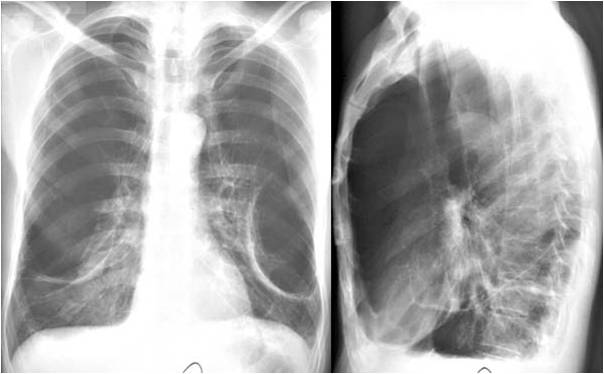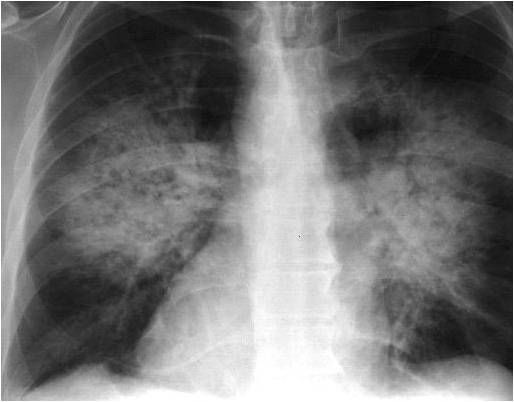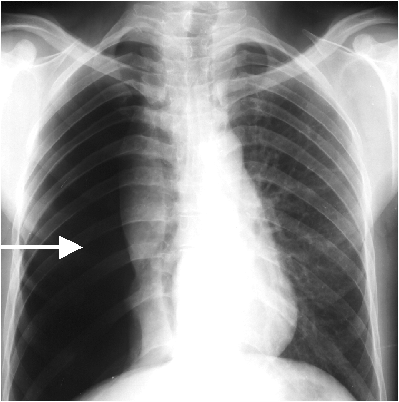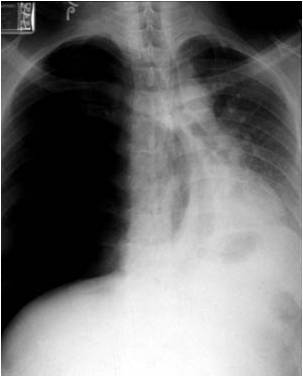Radiology Test Questions And Answers
(398).jpg)
Are you well-versed in the realm of radiology? If you've explored this fascinating field, put your knowledge to the test with our comprehensive Radiology Test Questions and Answers quiz. Radiology is a critical scientific discipline that employs medical imaging techniques to diagnose and, in some instances, treat a range of diseases and conditions within the human body.
This quiz is designed to challenge your understanding of radiology concepts and principles. Through a series of thought-provoking questions, you'll assess your familiarity with various imaging modalities, diagnostic procedures, and their clinical applications. Aim to achieve a minimum score of Read more70% to prove your competence in the field.
Whether you're a student of radiology, a healthcare professional, or simply intrigued by medical imaging, this quiz offers a valuable opportunity to test and expand your knowledge. Good luck, and let's see how well you can navigate the world of radiology!
- 1.
Radiology is only used for diagnostic purposes. State true or false.
- A.
True
- B.
False
Correct Answer
B. FalseExplanation
False. Radiology is not only used for diagnostic purposes. It is also used for therapeutic purposes, such as radiation therapy for cancer treatment.Rate this question:
-
- 2.
Which of the following is true about X rays?
- A.
Uses a vacuum and low potential difference
- B.
Denser materials cause less blackening
- C.
Form of electromagnetic energy with long wavelength
- D.
All of the above
Correct Answer
B. Denser materials cause less blackeningExplanation
Denser materials cause less blackening in X-rays because they are more effective in absorbing the X-ray photons. As X-rays pass through a material, they are absorbed by the atoms in the material. Denser materials have more atoms packed closely together, leading to more opportunities for absorption. This results in less blackening on the X-ray film or detector when denser materials are present.Rate this question:
-
- 3.
Which of the following is true about contrast examinations?
- A.
Myelography performed by injecting contrast into epidural space
- B.
Angiography can only be performed in the intra-arterially
- C.
Contrast medium can be mixed with air or water
- D.
Sinogram is a contrast study for the frontal sinuses
Correct Answer
C. Contrast medium can be mixed with air or waterExplanation
Contrast examinations involve the use of contrast medium, which can be mixed with either air or water. This allows for better visualization of certain structures or organs during imaging procedures. Mixing contrast medium with air or water helps to highlight specific areas of interest and improve the clarity of the images obtained.Rate this question:
-
- 4.
Which of the following modalities can be used to determine flow velocities through vasculature?
- A.
MRI
- B.
Ultrasound
- C.
Spiral CT
- D.
Teleradiology
Correct Answer
B. UltrasoundExplanation
Ultrasound can be used to determine flow velocities through vasculature. Ultrasound imaging uses high-frequency sound waves to create real-time images of the blood vessels. By analyzing the Doppler effect, which involves changes in sound frequency caused by the movement of blood cells, ultrasound can measure the velocity and direction of blood flow in the vasculature. This non-invasive technique is commonly used in medical settings to assess blood flow in various parts of the body, such as the heart, arteries, and veins.Rate this question:
-
- 5.
When examining the chest or musculoskeletal system, which of the following modalities would be least helpful?
- A.
X-ray
- B.
MRI
- C.
Spiral CT
- D.
Ultrasound
Correct Answer
D. UltrasoundExplanation
Ultrasound would be the least helpful modality when examining the chest or musculoskeletal system. Ultrasound uses high-frequency sound waves to create images of the body's internal structures. While it is useful for evaluating soft tissues and organs, it is not as effective in visualizing bones and dense structures like X-ray, MRI, and Spiral CT. These modalities provide better visualization of the musculoskeletal system and can detect abnormalities such as fractures, tumors, and infections. Ultrasound is more commonly used for evaluating soft tissues, such as tendons, muscles, and organs like the heart or liver.Rate this question:
-
- 6.
When choosing imaging studies, protocol should be followed for most patients in clinical practice
- A.
True
- B.
False
Correct Answer
B. FalseExplanation
The statement is false because while following a protocol is important in clinical practice, it is not necessary for most patients when choosing imaging studies. Each patient's case should be evaluated individually, taking into consideration their specific symptoms, medical history, and the suspected diagnosis. The protocol may not be applicable or optimal for every patient, and the decision on which imaging study to choose should be based on the individual patient's needs and circumstances.Rate this question:
-
- 7.
Which of the following can be assessed on plain film?
- A.
Myocardial thickness
- B.
Heart size
- C.
Motion
- D.
Coronary artery disease
Correct Answer
B. Heart sizeExplanation
Heart size can be assessed on plain film because a plain film, such as a chest X-ray, can provide a visual representation of the heart and its size. By analyzing the shape and dimensions of the heart on the film, healthcare professionals can determine if the heart is enlarged or within normal size range. This assessment can be helpful in diagnosing certain cardiac conditions or monitoring the progression of heart disease.Rate this question:
-
- 8.
Which of the following factors and their effect on the heart's appearance are paired correctly?
- A.
Mediastinal shift: apparent enlargement
- B.
COPD: Masked enlargement
- C.
Scoliosis: masked enlargement
- D.
All of the above
Correct Answer
B. COPD: Masked enlargementExplanation
COPD stands for Chronic Obstructive Pulmonary Disease, which is a chronic inflammatory lung disease that causes obstructed airflow from the lungs. In COPD, the lungs become hyperinflated, causing the diaphragm to flatten and push the heart downwards, giving the appearance of enlargement. This is why COPD is correctly paired with "masked enlargement" as it can hide the true size of the heart on imaging.Rate this question:
-
- 9.
Which condition is associated with the image above?
- A.
COPD
- B.
CHF
- C.
Pneumothorax
- D.
Atelectasis
Correct Answer
B. CHFExplanation
The image above is likely showing signs of congestive heart failure (CHF). CHF is a condition where the heart is unable to pump enough blood to meet the body's needs. This can lead to fluid accumulation in the lungs, causing symptoms such as shortness of breath, coughing, and chest congestion. The image may show evidence of fluid in the lungs or an enlarged heart, which are common findings in CHF.Rate this question:
-
- 10.
This image shows which of the following?
- A.
Pleural effusion
- B.
Aortic aneurysm
- C.
COPD: Emphysema
- D.
Pericarditis
Correct Answer
D. PericarditisExplanation
The image shows a condition called pericarditis. Pericarditis is the inflammation of the pericardium, which is the sac-like covering around the heart. It can cause chest pain, difficulty breathing, and other symptoms. The image may show signs of inflammation or fluid accumulation around the heart, which are characteristic of pericarditis.Rate this question:
-
- 11.
This image is significant for which of the following?
- A.
Pleural effusion
- B.
Kerly b lines
- C.
Pericardial effusion
- D.
Pneumothorax
Correct Answer
C. Pericardial effusionExplanation
This image is significant for pericardial effusion because it shows an accumulation of fluid around the heart, which is characteristic of this condition.Rate this question:
-
- 12.
The condition depicted in this picture would cause masked enlargement of the heart on CXR. State true or false.
- A.
True
- B.
False
Correct Answer
B. FalseExplanation
The question states that the condition depicted in the picture would cause masked enlargement of the heart on CXR. However, the correct answer is false, which means that the condition shown in the picture would not cause masked enlargement of the heart on CXR.Rate this question:
-
- 13.
This is considered
- A.
Tension pneumothorax
- B.
Situs inversus
- C.
Mediastinal shift
- D.
A & C
Correct Answer
B. Situs inversusExplanation
Situs inversus is the correct answer because it is a condition in which the organs of the body are reversed or mirrored from their normal positions. In this case, it suggests that the organs in the chest cavity, including the lungs, may be reversed. This can be significant in diagnosing and treating conditions such as tension pneumothorax, which is the abnormal accumulation of air in the pleural space causing a collapsed lung. The presence of situs inversus can affect the presentation and management of conditions like mediastinal shift, where the organs in the middle of the chest are displaced. Therefore, situs inversus is a relevant consideration in this context.Rate this question:
-
- 14.
This patient is likely suffering from?
- A.
Pericarditis
- B.
Pneumothorax
- C.
Heart Failure
- D.
Aortic stenosis
Correct Answer
C. Heart FailureExplanation
Heart failure is the likely condition for this patient based on the given information. Pericarditis refers to inflammation of the pericardium, the sac surrounding the heart, but there is no mention of inflammation. Pneumothorax is the presence of air in the pleural cavity, which is not relevant to the symptoms described. Aortic stenosis is a narrowing of the aortic valve, but there is no mention of valve dysfunction. Therefore, heart failure is the most appropriate diagnosis based on the given options.Rate this question:
-
- 15.
This patient is suffering from which of the following?
- A.
Hemothorax
- B.
Acute chest syndrome
- C.
Pericarditis
- D.
Heart Failure
Correct Answer
D. Heart FailureExplanation
Heart failure is the most likely diagnosis based on the given options. Hemothorax refers to blood accumulation in the pleural cavity and is not mentioned in the question. Aortic aneurysm is the abnormal dilation of the aorta, which is not related to the symptoms mentioned. Pericarditis is inflammation of the pericardium, the outer lining of the heart, which does not directly cause symptoms of heart failure. Therefore, heart failure is the most appropriate diagnosis for this patient.Rate this question:
-
- 16.
This patient most likely has which of the following?
- A.
Hemothorax
- B.
Acute PE
- C.
Emphysema
- D.
Pericardial effusion
Correct Answer
B. Acute PEExplanation
This patient most likely has Acute PE (Pulmonary Embolism). A pulmonary embolism occurs when a blood clot gets lodged in one of the arteries in the lungs, blocking blood flow. This can result in symptoms such as shortness of breath, chest pain, and coughing. Given the limited information provided, the symptoms described are consistent with a pulmonary embolism rather than hemothorax, emphysema, or pericardial effusion.Rate this question:
-
- 17.
Structures closer to the x-ray film appear larger. True or false?
- A.
True
- B.
False
Correct Answer
B. FalseExplanation
Structures closer to the x-ray film do not appear larger. This is because the size of the structures in an x-ray image is determined by the distance between the x-ray source, the object being imaged, and the x-ray film. The closer the object is to the film, the smaller it appears in the image. Therefore, the correct answer is false.Rate this question:
-
- 18.
This CXR is best described by which of the following?
- A.
Rotated
- B.
PA view
- C.
Normal
- D.
Emphysema
Correct Answer
C. NormalExplanation
The given CXR (chest X-ray) is described as "normal" because there are no indications of any abnormalities or pathologies in the image. It does not show any signs of rotation, and it is taken in a PA (posteroanterior) view, which is the standard positioning for a chest X-ray. There are no visible signs of emphysema or any other lung conditions. Therefore, the best description for this CXR is "normal."Rate this question:
-
- 19.
This patient is most likely suffering from ________.
- A.
Situs inversus
- B.
Pneumothorax
- C.
Atelectasis
- D.
RUL pneumonia
Correct Answer
D. RUL pneumoniaExplanation
Based on the given options, the most likely condition the patient is suffering from is RUL pneumonia. Situs inversus refers to a condition where the organs are mirrored from their normal positions, which is not indicated in the question. Pneumothorax is the accumulation of air in the pleural space, causing lung collapse, which is not mentioned in the question. Atelectasis refers to the collapse or incomplete expansion of the lung, which is also not mentioned. Therefore, RUL pneumonia is the most fitting option based on the information provided.Rate this question:
-
- 20.
This patient is suffering from which one of the following?
- A.
Pericardial effusion
- B.
LLL pneumonia
- C.
Emphysema
- D.
CHF
Correct Answer
B. LLL pneumoniaExplanation
The patient is suffering from LLL pneumonia. This can be inferred based on the information provided in the question. The other options, pericardial effusion, emphysema, and CHF, are not mentioned or indicated in the question. Therefore, LLL pneumonia is the most likely correct answer.Rate this question:
-
- 21.
This is best described by which of the following?
- A.
Mediastinal shift
- B.
Emphysema
- C.
Atelectasis
- D.
Pneumonia
Correct Answer
C. AtelectasisExplanation
Atelectasis is the best description for the given scenario. Atelectasis refers to the collapse or closure of a lung or a part of it, causing a shift in the mediastinum. This can occur due to various reasons such as blockage of the airways, compression of lung tissue, or surfactant deficiency. It can lead to reduced oxygenation and respiratory distress. Emphysema is a condition characterized by the destruction of the air sacs in the lungs, while pneumonia refers to an infection in the lungs.Rate this question:
-
- 22.
Where in this picture is the atelectasis located?
- A.
RUL
- B.
LUL
- C.
RML
- D.
LLL
Correct Answer
B. LULExplanation
The atelectasis is located in the left upper lobe (LUL) of the picture.Rate this question:
-
- 23.
This condition is known as _________.
- A.
Cardiomegaly
- B.
Atelectasis
- C.
Pneumonia
- D.
Heart failure
Correct Answer
B. AtelectasisExplanation
Atelectasis refers to the partial or complete collapse of a lung or a section of a lung. It occurs when the tiny air sacs in the lung, known as alveoli, deflate and prevent the lung from fully expanding. This condition can be caused by various factors such as blockage of the airway, lung diseases, or surgery. Symptoms may include shortness of breath, rapid breathing, and chest pain. Treatment typically involves addressing the underlying cause and may include breathing exercises, medication, or in severe cases, surgery.Rate this question:
-
- 24.
- A.
Pleurisy
- B.
Pneumonia
- C.
Collapse
- D.
Pleural effusion
Correct Answer
C. CollapseExplanation
Collapse refers to the sudden loss of function or structure in a body part or system. In the context of the given options, collapse could be referring to a collapsed lung, also known as pneumothorax. This occurs when air leaks into the space between the lung and the chest wall, causing the lung to collapse. Symptoms may include sudden sharp chest pain, shortness of breath, and decreased breath sounds on one side of the chest. Collapse is a serious condition that requires medical attention.Rate this question:
-
- 25.
What is the most reliable indicator of this condition?
- A.
Kerly's b lines
- B.
Displacement of hilar vessels
- C.
Thickened interlobular septa
- D.
A & C
Correct Answer
B. Displacement of hilar vesselsExplanation
The most reliable indicator of this condition is the displacement of hilar vessels. Hilar vessels refer to the blood vessels located at the hilum of the lung, which is the area where the bronchi, blood vessels, and nerves enter and exit the lung. Displacement of these vessels can indicate a pathology or abnormality in the lung, such as a mass or tumor, which can cause the vessels to be pushed or shifted from their normal position. Therefore, observing the displacement of hilar vessels can be a valuable diagnostic tool in identifying and evaluating certain lung conditions.Rate this question:
-
- 26.
This condition can be best described by which of the following?
- A.
Of neoplastic origin
- B.
Caused by low surfactant
- C.
Massive effusion
- D.
A & C
Correct Answer
D. A & CExplanation
This condition can be best described as being of neoplastic origin and causing massive effusion.Rate this question:
-
- 27.
This person is suffering from __________.
- A.
Situs inversus
- B.
Pleural effusion
- C.
Emphysema
- D.
Atelectasis
Correct Answer
B. Pleural effusionExplanation
The person is suffering from pleural effusion, which is the accumulation of excess fluid in the pleural space, the area between the lungs and the chest wall. This condition can cause symptoms such as chest pain, shortness of breath, and coughing. It can be caused by various factors, including infections, heart failure, and lung diseases. Treatment options for pleural effusion may include draining the fluid, addressing the underlying cause, and providing supportive care to relieve symptoms.Rate this question:
-
- 28.
Which condition is this?
- A.
Hemothorax
- B.
CHF
- C.
COPD
- D.
Pneumothorax
Correct Answer
A. HemothoraxExplanation
This question is asking to identify a condition among the given options. The correct answer is hemothorax. Hemothorax refers to the accumulation of blood in the pleural cavity, the space between the lungs and the chest wall. It can occur due to trauma, surgery, or certain medical conditions. Symptoms may include chest pain, difficulty breathing, and decreased breath sounds on one side of the chest. Treatment typically involves draining the blood from the pleural cavity and addressing the underlying cause.Rate this question:
-
- 29.
What condition does this image demonstrate?
- A.
Acute PE
- B.
Asbestosis
- C.
Pleural effusion
- D.
Heart failure
Correct Answer
B. AsbestosisExplanation
The image demonstrates asbestosis. Asbestosis is a lung disease caused by inhaling asbestos fibers, which leads to scarring and inflammation of the lung tissue. The image might show characteristic findings such as diffuse interstitial fibrosis and pleural plaques, which are commonly seen in asbestosis.Rate this question:
-
- 30.
This patient's RUL is probably filled by a _________.
- A.
Tumor or granuloma
- B.
Loculated effusion
- C.
Acute hemothorax
- D.
Secondary TB infection
Correct Answer
A. Tumor or granulomaExplanation
The correct answer is tumor or granuloma. This is because tumors or granulomas can cause the lung tissue to fill up, leading to a reduced residual lung volume (RUL). This can be seen in conditions such as lung cancer or tuberculosis, where the abnormal growth or inflammation can obstruct the airways and decrease the amount of air that can be held in the lungs.Rate this question:
-
- 31.
What is the most reliable sign of this condition?
- A.
Hyperfluency
- B.
Hyperinflation
- C.
Flattened diapraghm
- D.
Decreased vasularity
Correct Answer
D. Decreased vasularityExplanation
A decreased vascularity is the most reliable sign of this condition. This means that there is a reduced blood flow to a particular area or organ. In the context of the given options, it suggests that there is a reduced blood flow to a specific area or organ, which can indicate a problem or abnormality. This can be a significant finding in diagnosing and understanding the condition being discussed.Rate this question:
-
- 32.
These pictures show
- A.
Valvular stenosis
- B.
Cardiac calcification
- C.
Bullae in the lungs
- D.
Pneumothorax
Correct Answer
C. Bullae in the lungsExplanation
The given pictures are showing bullae in the lungs. Bullae are large air-filled spaces that can develop in the lungs. They are often caused by lung diseases such as chronic obstructive pulmonary disease (COPD) or emphysema. Bullae can cause symptoms such as shortness of breath and can increase the risk of complications like pneumothorax (collapsed lung). Therefore, the presence of bullae in the lungs can be identified from the given pictures.Rate this question:
-
- 33.
The image shown above illustrates which of the following?
- A.
Mediastinal shift
- B.
Pulmonary edema
- C.
Bilateral pneumonia
- D.
Metastatic lung cancer
Correct Answer
B. Pulmonary edemaExplanation
The image shown above illustrates pulmonary edema. Pulmonary edema refers to the accumulation of fluid in the lungs, which can be caused by various factors such as heart failure, kidney problems, or lung infections. This condition is characterized by the presence of fluid-filled spaces in the lung tissue, leading to difficulty in breathing and other respiratory symptoms. The image likely shows the characteristic features of pulmonary edema, such as increased lung markings and haziness on the radiograph.Rate this question:
-
- 34.
Identify this condition.
- A.
Atelectasis
- B.
Pneumothorax
- C.
Emphysema
- D.
Acute PE
Correct Answer
B. PneumothoraxExplanation
A pneumothorax is a condition characterized by the presence of air or gas in the pleural cavity, which is the space between the lungs and the chest wall. This can occur when there is a rupture in the lung tissue or air leaks from the airways into the pleural space. Symptoms of a pneumothorax may include sudden chest pain, shortness of breath, and decreased breath sounds on one side of the chest. Treatment typically involves removing the air from the pleural space and addressing the underlying cause.Rate this question:
-
- 35.
Which of the following condition is shown in this picture?
- A.
Lung cancer
- B.
Tension pneumo
- C.
Right sided mediastinal shift
- D.
B & C
Correct Answer
B. Tension pneumoExplanation
The condition shown in the picture is tension pneumo. This can be inferred from the given options, where "tension pneumo" is listed as one of the conditions. Tension pneumo refers to the accumulation of air in the pleural space, causing the lung to collapse and leading to a shift of the mediastinum towards the unaffected side.Rate this question:
-
- 36.
What condition is shown in this image?
- A.
Atelectasis
- B.
Pulmonary embolism
- C.
Cardiomegaly
- D.
Bilateral effusion
Correct Answer
B. Pulmonary embolismExplanation
The condition shown in the image is pulmonary embolism. This is indicated by the presence of a blood clot in the pulmonary arteries, which can block blood flow to the lungs. Symptoms may include shortness of breath, chest pain, and coughing up blood. Prompt diagnosis and treatment are essential to prevent further complications.Rate this question:
-
- 37.
What condition is this?
- A.
Pneumonia
- B.
Hemothorax
- C.
Loculated effusion
- D.
Tuberculosis
Correct Answer
D. TuberculosisExplanation
This question is asking for the condition that is being described. The correct answer is tuberculosis.Rate this question:
-
- 38.
This picture can be best described as:
- A.
Bilateral pleural effusion
- B.
Respiratory distress sydrome
- C.
Tuberculosis
- D.
Metastatic lung cancer
Correct Answer
B. Respiratory distress sydrome -
- 39.
The condition highlighted in this picture begins with __________.
- A.
Interstitial pattern in upper lobes
- B.
Calcification and shift of fissures
- C.
Hilar node displacement
- D.
Decreased vasularity of periphery
- E.
All of the above
Correct Answer
A. Interstitial pattern in upper lobesExplanation
The correct answer is "interstitial pattern in upper lobes". This means that the condition highlighted in the picture is characterized by an abnormal pattern in the interstitium (the tissue that supports the structures within the lung) specifically in the upper lobes of the lungs. This could indicate a variety of conditions such as interstitial lung disease or pulmonary fibrosis.Rate this question:
-
Quiz Review Timeline +
Our quizzes are rigorously reviewed, monitored and continuously updated by our expert board to maintain accuracy, relevance, and timeliness.
-
Current Version
-
Sep 05, 2024Quiz Edited by
ProProfs Editorial Team
Expert Reviewed by
Airolle Queen De La Cruz -
Mar 28, 2011Quiz Created by
Chinedua
- First Aid Quizzes
- GCP Quizzes
- Healing Quizzes
- Mammography Quizzes
- Medical Coding Quizzes
- Medical Science Quizzes
- Medical Term Quizzes
- Medical Terminology Quizzes
- Medical Training Quizzes
- Medical Vocabulary Quizzes
- MRI Quizzes
- Nuclear Medicine Quizzes
- Obstetrics And Gynecology Quizzes
- Pathology Quizzes
- Pathophysiology Quizzes
- Phlebotomy Quizzes
- Pulmonary Quizzes
- Radiography Quizzes
- Syndrome Quizzes
- Ultrasound Quizzes
- Vital Signs Quizzes
- Xray Quizzes
 Back to top
Back to top








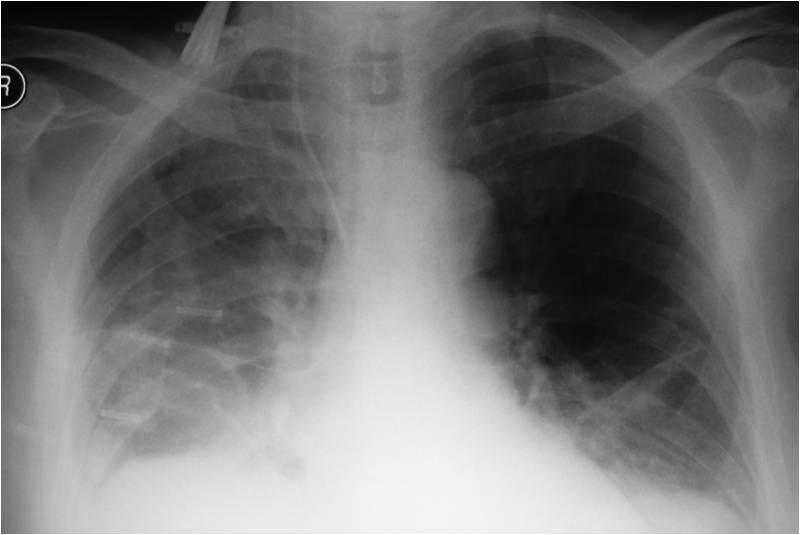






.jpg)


.jpg)






